Diquat causes caspase-independent cell death in SH-SY5Y cells by production of ROS independently of mitochondria
- PMID: 25693864
- PMCID: PMC4572080
- DOI: 10.1007/s00204-015-1453-5
Diquat causes caspase-independent cell death in SH-SY5Y cells by production of ROS independently of mitochondria
Erratum in
-
Erratum to: Diquat causes caspase-independent cell death in SH-SY5Y cells by production of ROS independently of mitochondria.Arch Toxicol. 2015 Oct;89(10):1827. doi: 10.1007/s00204-015-1542-5. Arch Toxicol. 2015. PMID: 26084419 Free PMC article. No abstract available.
Abstract
Evidence indicates that Parkinson's disease (PD), in addition to having a genetic aetiology, has an environmental component that contributes to disease onset and progression. The exact nature of any environmental agent contributing to PD is unknown in most cases. Given its similarity to paraquat, an agrochemical removed from registration in the EU for its suspected potential to cause PD, we have investigated the in vitro capacity of the related herbicide Diquat to cause PD-like cell death. Diquat showed greater toxicity towards SH-SY5Y neuroblastoma cells and human midbrain neural cells than paraquat and also MPTP, which was independent of dopamine transporter-mediated uptake. Diquat caused cell death independently of caspase activation, potentially via RIP1 kinase, with only a minor contribution from apoptosis, which was accompanied by enhanced reactive oxygen species production in the absence of major inhibition of complex I of the mitochondrial respiratory chain. No changes in α-synuclein expression were observed following 24-h or 4-week exposure. Diquat may, therefore, kill neural tissue by programmed necrosis rather than apoptosis, reflecting the pathological changes seen following high-level exposure, although its ability to promote PD is unclear.
Keywords: Apoptosis; Diquat; Mitochondria; Necrosis; Parkinson’s disease; Pesticide.
Figures
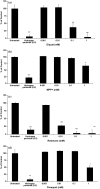
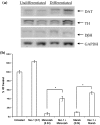



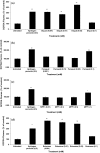
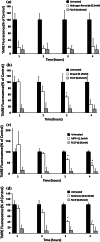

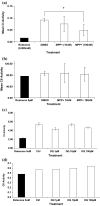

Similar articles
-
Neuroprotective mechanisms of the standardized extract of Bacopa monniera in a paraquat/diquat-mediated acute toxicity.Neurochem Int. 2013 Apr;62(5):530-9. doi: 10.1016/j.neuint.2013.01.030. Epub 2013 Feb 9. Neurochem Int. 2013. PMID: 23402822
-
NF-κB/p53-activated inflammatory response involves in diquat-induced mitochondrial dysfunction and apoptosis.Environ Toxicol. 2018 Oct;33(10):1005-1018. doi: 10.1002/tox.22552. Epub 2018 Feb 27. Environ Toxicol. 2018. PMID: 29484840
-
Mitochondrial bioenergetics and locomotor activity are altered in zebrafish (Danio rerio) after exposure to the bipyridylium herbicide diquat.Toxicol Lett. 2018 Feb;283:13-20. doi: 10.1016/j.toxlet.2017.10.022. Epub 2017 Nov 1. Toxicol Lett. 2018. PMID: 29100808
-
The impact of reactive oxygen species and genetic mitochondrial mutations in Parkinson's disease.Gene. 2013 Dec 10;532(1):18-23. doi: 10.1016/j.gene.2013.07.085. Epub 2013 Aug 15. Gene. 2013. PMID: 23954870 Review.
-
Effect of Diquat on gut health: molecular mechanisms, toxic effects, and protective strategies.Front Pharmacol. 2025 May 12;16:1562182. doi: 10.3389/fphar.2025.1562182. eCollection 2025. Front Pharmacol. 2025. PMID: 40421207 Free PMC article. Review.
Cited by
-
Vitamin D3 Protects Mice from Diquat-Induced Oxidative Stress through the NF-κB/Nrf2/HO-1 Signaling Pathway.Oxid Med Cell Longev. 2021 Nov 16;2021:6776956. doi: 10.1155/2021/6776956. eCollection 2021. Oxid Med Cell Longev. 2021. PMID: 34824670 Free PMC article.
-
Protective effects of taurine against muscle damage induced by diquat in 35 days weaned piglets.J Anim Sci Biotechnol. 2020 Jun 3;11:56. doi: 10.1186/s40104-020-00463-0. eCollection 2020. J Anim Sci Biotechnol. 2020. PMID: 32514342 Free PMC article.
-
Analysis of Human microRNA Expression Profiling During Diquat-Induced Renal Proximal Tubular Epithelial Cell Injury.J Inflamm Res. 2023 Oct 31;16:4953-4965. doi: 10.2147/JIR.S427004. eCollection 2023. J Inflamm Res. 2023. PMID: 37927960 Free PMC article.
-
Taurine Alleviates Intestinal Injury by Mediating Tight Junction Barriers in Diquat-Challenged Piglet Models.Front Physiol. 2020 May 28;11:449. doi: 10.3389/fphys.2020.00449. eCollection 2020. Front Physiol. 2020. PMID: 32547405 Free PMC article.
-
Aluminum Induced Necroptosis of PC12 Cells via TNFR1-RIP1/RIP3 Signalling Pathway.Neurochem Res. 2022 Oct;47(10):3037-3050. doi: 10.1007/s11064-022-03653-6. Epub 2022 Jul 7. Neurochem Res. 2022. PMID: 35796914
References
-
- Amstad PA, Yu G, Johnson GL, Lee BW, Dhawan S, Phelps DJ (2001) Detection of caspase activation in situ by fluorochrome-labeled caspase inhibitors. Biotechniques 31:608–610, 612, 614, passim - PubMed
-
- Barroso N, Campos Y, Huertas R, Esteban J, Molina JA, Alonso A, Gutierrez-Rivas E, Arenas J. Respiratory chain enzyme activities in lymphocytes from untreated patients with Parkinson disease. Clin Chem. 1993;39:667–669. - PubMed
-
- Barsoum MJ, Yuan H, Gerencser AA, Liot G, Kushnareva Y, Graber S, Kovacs I, Lee WD, Waggoner J, Cui J, White AD, Bossy B, Martinou JC, Youle RJ, Lipton SA, Ellisman MH, Perkins GA, Bossy-Wetzel E. Nitric oxide-induced mitochondrial fission is regulated by dynamin-related GTPases in neurons. EMBO J. 2006;25:3900–3911. doi: 10.1038/sj.emboj.7601253. - DOI - PMC - PubMed
-
- Bender A, Krishnan KJ, Morris CM, Taylor GA, Reeve AK, Perry RH, Jaros E, Hersheson JS, Betts J, Klopstock T, Taylor RW, Turnbull DM. High levels of mitochondrial DNA deletions in substantia nigra neurons in aging and Parkinson disease. Nat Genet. 2006;38:515–517. doi: 10.1038/ng1769. - DOI - PubMed
Publication types
MeSH terms
Substances
Grants and funding
LinkOut - more resources
Full Text Sources
Other Literature Sources
Miscellaneous

